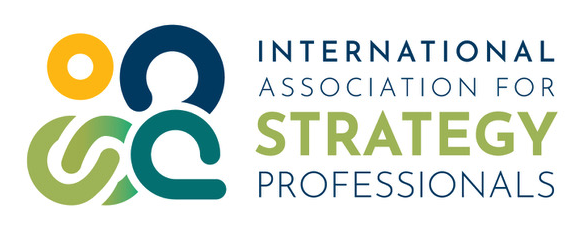By James D. Stockmal
Abstract
Today, many organizations are engaged in some form of organizational transformation either out of necessity to either compete, combat the impacts of the pandemic, or leverage new digital technologies. Many have discussed how, for most companies, transformation is hard. As such, several models have been proposed to help organizations reap more benefits of their transformations. The purpose of this article is to describe the time-proven organizational development (OD) principles and how they can guide any transformation effort, large or small.
Today, many organizations are engaged in some form of organizational transformation either out of necessity to either compete, combat the impacts of the pandemic, or leverage new digital technologies. Many have discussed how, for most companies, transformation is hard.1
As such, several models have been proposed to help organizations reap more benefits of their transformations. Consulting firms like McKinsey, IBM, and PwC frequently offer their insights for successful transformations. Now, technologists responsible for the digital technologies are emphasizing the need to handle the human side of change. Finally! The purpose of this article is to describe the time-proven organizational development (OD) principles and how they can guide any transformation effort, large or small.
Organizational Development: An Overview
Organization Development (OD) is a dynamic values-based approach to systems change in organizations and communities; it strives to build the capacity to achieve and sustain a new desired state that benefits the organization or community and the world around them.2 In many ways, it is a sustainable approach to continuously improve any organizations’ structures and processes. One of the pioneers in the field of OD is Kurt Lewin with his seminal writings in the 1930s and 1940s. Lewin helped develop theories of social change, group dynamics and group decision making. Posthumously, Lewin’s work in the area of field theory influenced many, including Ron Lippitt (Lewin’s student), Ed Schein (Lippitt’s student), and later: Rosabeth Moss Kanter, Marvin Weisbord, and John Kotter.3,4
Lewin’s approach to change and transformation is referred to as ‘changing as three stages’ or CATS: unfreeze, change (or transform), and refreeze. The unfreeze stage is focused on freeing up the organizational norms and practices, as well as creating a psychologically safe environment for those involved in the transformation initiative to consider new ways of getting the work done. The change stage is just about that, making the changes needed to operate at a higher level of performance and effectiveness. The refreeze stage involves assimilating the new change into the operating model as it becomes the new norm. Although CATS has come under attack in recent years, this simplistic yet powerful formula is still at the heart of many leading approaches to change management, including the popular Awareness, Desire, Knowledge, Ability and Reinforcement (ADKAR) approach to managing individual change, especially if combined with action research and force field analysis.
[See definitions in Table below.]
Lewin and other OD theorists believe that (1) change should be implemented for good reasons; (2) all change should be planned; and (3) all individuals affected must be involved in the planning of the change, Lewin also believed that leadership needs to play a key role at each stage of change. Leaders should educate, communicate, involve, task support, and provide emotional support to their employees during any change or transformation initiative.5 Organizations don’t change and neither do people, unless they want to. Change is an individual choice and action. As Kurt Lewin said, “…motivation for change must be generated before change can occur.” Rick Maurer’s ‘energy bar’ concept (see www.energybartools.com) is a modern adaptation of Lewin’s theory as is McKinsey’s ‘Seven S’ model.
Applying OD Principles to Transformations
To this day, the field of organizational development continues to evolve and expand. Several affinity groups and professional associations are still very active, including the Organizational Development Network which has set in place the following eight essential “principles of OD” that, in addition to guiding the field’s work, can guide any transformation and change initiative.
Values-based •
Values are grounded in the organization’s culture. An OD practitioner looks for values such as respect of the individual, inclusion (and in the 2020s probably diversity and equity), collaboration, authenticity, self-awareness, and empowerment. If a transformation team is not exhibiting these OD values, chances are that there could be team effectiveness issues down the line. These values, when practiced and supported by leaders, also help support team psychological safety. Safety to debate, try new things, especially at the unfreezing stage. Safety to make mistakes and learn from failures during deployment of the change.
Supported By Theory •
OD practitioners, like Lewin, believe in taking action grounded in solid theory, including how people approach and adjust to change. Although change seems to be a constant, everyone reacts to it in different ways. That is why understanding the theories of group dynamics, leadership, and change is so fundamentally essential for anyone engaged in a transformation endeavor. With advances in neuroscience, OD practitioners will continually expand and improve the success rate of their change practices.
Systems-focused •
Systems-focused thinking helps understand interdependencies between components of a system, or organization. During a transformation, it is important to understand the whole, not just the parts of the transformation effort. This means connecting the dots on how one change in the organizational system affects others. What might be seen as a good change in one area, may have untended consequences in other areas of the system. An OD practitioner tests the new transformation ideas and engages with a larger part of the organization to understand the linkages.
Action Research •
OD practitioners continually examine and re-examine the effects of the actions taken during a planned change. Transformation work, like strategy, is a hypothesis that needs to be tested. Examining and reflecting on these during the change gives greater awareness of the unintended consequences and swifter action to adjust the approach.
Process-focused •
OD practitioners have come to understand the importance of the process used in a transformation initiative and they continually take time to reflect about it with all those involved in the process. They take a ‘process check’ and adjust accordingly making sure to live the values in real time. The team also needs to continually monitor senior leader support, as leadership involvement is vital to success at in all three stages of the transformation. Wherever possible, seek small wins and celebrate them with the team and those impacted by the wins.
Informed By Data •
Data is obtained by the transformation team through direct observation, as well as by surveys, one-on-one discussions, town halls, Zoom sessions, etc. The team should also be responsible for developing a multi-pronged communication and stakeholder engagement plan, including creating narratives to win both hearts and minds. Teams must proactively assess the hearts and minds of those involved and impacted by the changes during a transformation initiative. All team members need to listen to the stakeholders (data) during the project and take action when the data tells that it is time to act.
Another best practice is to conduct ‘readiness for change’ assessments frequently, but especially near the ‘launch’ of the change – the new process, method, policy, system, etc. – and listen well. This will provide vital data to make sure everyone impacted by the change feel they have what they need to be successful, including training and other helpful mechanisms. Learn from all missteps. Pivot when needed. A transformation leader can’t “stick their head in the sand” and must constantly sense for what is going on with the transformation team and those impacted by the change.
Client-centered •
In much OD work, practitioners always focus on who they are doing the work for, the leader, the manager, the team – their client. A transformation expert too must always keep the customers of the effort as the North Star. This customer centricity also needs to be re-examined, especially on longer term initiatives as the needs of the client may change over time. Sometimes the ‘social contract’ needs to be contracted between the practitioner and the client.6
Focused on Effectiveness and Health •
Lewin was very much concerned with the long-term health of the organization, group, and individual. “Do no harm” is often heard in the field of OD. Successful transformation efforts focus on improvement and building capacities and not wasting resources. Taking time out occasionally to reflect on the initiative and checking in on how everyone is doing is something that must be built into transformation plans. It is good for the team and the long-term effectiveness of the organization, especially on larger and often longer projects.
Putting these principles into place on a transformation effort means to be purposeful with the change. It means to assemble a cross functional team made up by those impacted/affected by the transformation initiative, have them plan out the transformation initiative and provide support throughout the process.
For those thinking that Lewin’s classical approach is irrelevant in the time of rapid change, disruptions, and in a VUCA world, the same three-stage model does work by applying agile techniques and practices. This hybrid, agile-CATS approach is similar to Marvin Weisbord’s Future Search approach, but on a more rapid pace. Weisbord’s Future Search approach is scalable, as is Lewin’s CATS. Another best practice from IntelliVen’s Manage to Lead approach is to conduct frequent reviews to help organizations stay on track during the transformation initiative using the “what we planned to do,” “what happened,” “so what,” and “now what” approach.7
Conclusion
In summary, OD principles and related approaches, methods and tools can improve an organization’s ability to execute a transformation initiative, whether small or enterprise-wide. They can help project teams better cope with the plethora of people related issues that are likely to come up during any transformation endeavor. Indeed, organizational transformation is less about managing projects and deploying digital technologies. It is more about engaging people purposefully, ethically, and equitably. Some have said that strategy is a hypothesis to be tested, so too, is transformation. Use OD principles and practices to get the job done right. Let us work to make OD pervasive everywhere.
References
- Tabrizi, B., Lam, E., Girard, K., & Irvin, V. (2019). The Human Side of Transformation. The Transformation Playbook. Great Britain: The Project Management Institute.
- Organizational Development Network (2010, April 10). Principles of Organizational Development Practice [Web blog post]. Retrieved from www.island94.org
- Lewin, K. (1951). Field Theory in Social Science. New York: Harper & Row.
- Lewin, K. (1947). Group Decisions and Social Change (T. M. Newark & E. L. Hartley, Eds.). Readings in Social Psychology.
- Pierce, J. L., Gardner, D. G., & Dunham, R. B. (2002). Management and Organizational Behavior: An Integrated Perspective. Cincinnati, OH: South-Western Publishing.
- Block, P. (2011). Flawless Consulting: A Guide to Getting Your Expertise Used (Third ed.). Pfeiffer and Company.
- Stockmal, J. D. (2019, September 23). Strategy Execution: Getting Back on Track. Lecture presented at Bold Strategy Summit: DecideAct, Reykjavik.







